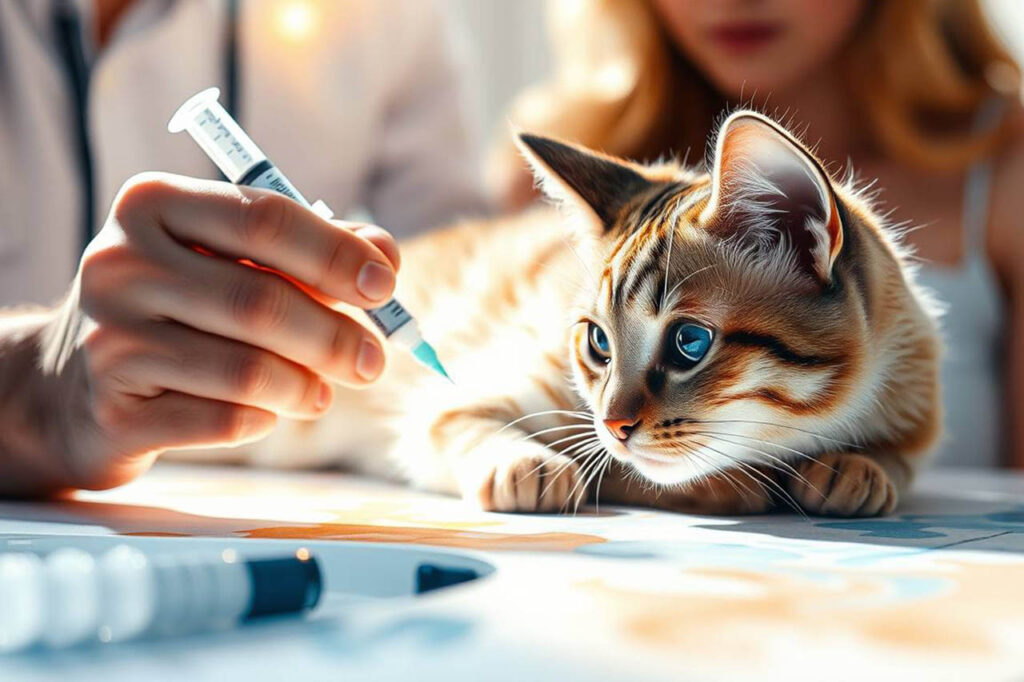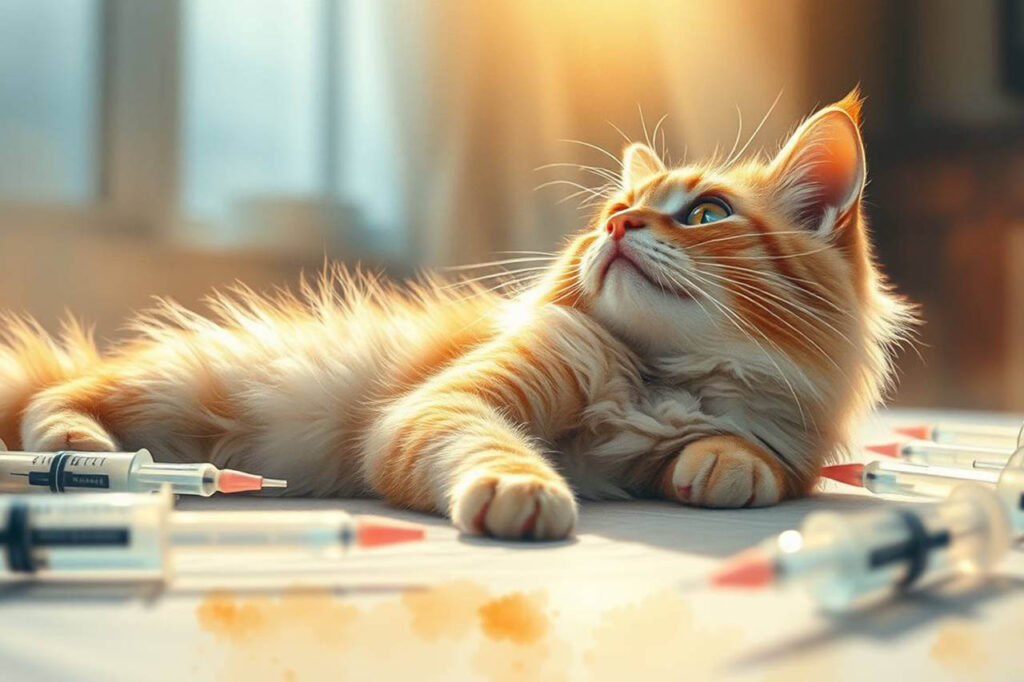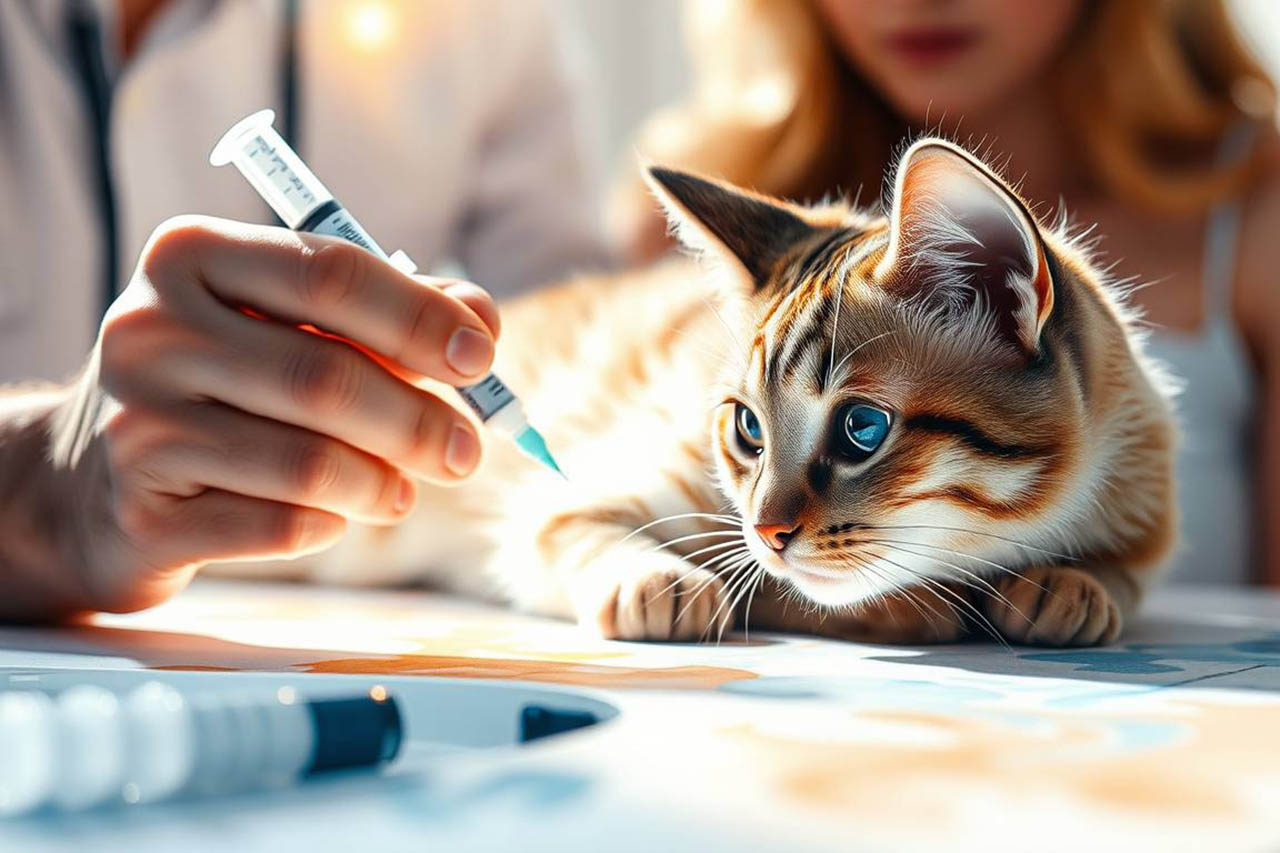Your cart is currently empty!
How to Draw Blood from a Cat at Home: Medial Saphenous Vein Guide

Drawing blood from a cat can be stressful—both for you and your pet. However, if you need to perform at-home blood draws (for conditions like diabetes monitoring or home testing), the medial saphenous vein is the safest and easiest option for beginners. Unlike the jugular or cephalic veins, this vein is more accessible, requires minimal restraint, and reduces the risk of complications. Learn how to easily draw blood from your cat at home with our step-by-step guide.
Important Note:
- Always consult your veterinarian before attempting blood drawing at home.
- Never force the process—if your cat becomes too stressed, stop and seek professional help.
Why the Medial Saphenous Vein is Best for Beginners
The medial saphenous vein (located on the hind leg) is:
✔ Easier to access than the jugular (no neck restraint needed).
✔ Less risky than the cephalic vein (front leg veins are smaller and harder to stabilize).
✔ More visible when properly prepped, making it ideal for first-timers.
Which Syringe Should I Use for Drawing Blood in Cats?
Choosing the right equipment is crucial for a safe, successful blood draw. Here’s what you need to know:
Needle Selection
- 22-gauge: Ideal for most cats (good balance of blood flow and comfort)
- 23-gauge: Slightly thinner, good for small veins
- 25-gauge: Only for tiny amounts (like glucose tests)
- Butterfly needles: Best for beginners (23-25G with flexible tubing)
Avoid needles thicker than 22G (like 18-20G) – they cause unnecessary pain.
Syringe Types
| Type | Best For | Capacity |
|---|---|---|
| Standard syringe | Most blood draws | 1-3 ml |
| Insulin syringe | Glucose tests | 0.3-1 ml |
| Vacuum tube system | Larger samples | 2-5 ml |
Pro Tip: For first-timers, a 1-3ml syringe with 22G needle or 23G butterfly needle works best. Most of our tests require only 1 ml of blood. However, if running multiple tests simultaneously, you may need to collect a larger sample.

Supplies You’ll Need to Draw Blood from a Cat
Before starting, gather:
- Sterile gloves
- Alcohol
- Cotton pads
- Gauze pads
- 22–25 gauge needle & syringe or microtainer
- Electric hair trimmer (to gently remove fur)
- Treats for positive reinforcement
- A helper (to keep the cat calm)
Step-by-Step: How to Draw Blood from a Cat — The Medial Saphenous Vein
Watch this video demonstration for a visual guide for drawing from the medial saphenous vein.
1. Prepare Your Cat
- Fast your cat for 2–4 hours (if advised by your vet) to improve vein visibility.
- Choose a quiet, low-stress area—avoid loud noises or distractions.
- Have all supplies ready within reach.
2. Restrain Your Cat Gently
- Have your helper hold the cat in their lap, supporting the body while extending one hind leg.
- Wrap the cat loosely in a towel if needed to prevent scratching.
3. Prepare the Site
- Use an electric hair trimmer to gently remove fur from the inner hind leg, 1-2 inches (3-5cm) above the hock. Shaving ensures better visibility and sterilization.
- Clean the area thoroughly with alcohol using cotton pad or a squeeze bottle.
4. Locate the Medial Saphenous Vein
- The vein runs along the inner side of the hind leg.
- It should appear as a thin, slightly raised blue line once the fur is removed.
5. Perform the Blood Draw
- Hold the needle at a shallow angle (10–20 degrees).
- Insert the needle just under the skin into the vein.
- Gently pull back the syringe plunger to collect blood.
- Collect only the needed amount (usually 1-3mL)
6. Post-Procedure Care
- Apply light pressure with gauze to stop bleeding.
- Reward your cat with treats to reduce future stress.

What to Do If You Miss the Vein
- Stay calm—reposition the needle slightly.
- If the vein collapses or bleeds excessively, stop and apply pressure.
- Never make multiple attempts—if unsuccessful, contact your vet.
When to Avoid At-Home Blood Draws in Cats
✖ Your cat is aggressive or overly stressed.
✖ You cannot clearly see or feel the vein.
✖ Excessive bleeding occurs (seek vet help immediately).
Final Advice
While the medial saphenous vein is the easiest and safest option for beginners, always consult your vet before attempting any blood draws. If in doubt, a professional vet or mobile vet service is the best choice.
Also learn how to draw blood from a dog at home, with our step-by-step guide.
Disclaimer
This guide is for informational purposes only and is not a substitute for professional veterinary care. Always seek advice from a licensed veterinarian before performing any medical procedures on your pet. The author and publisher are not liable for any complications or injuries resulting from the use of this information.





